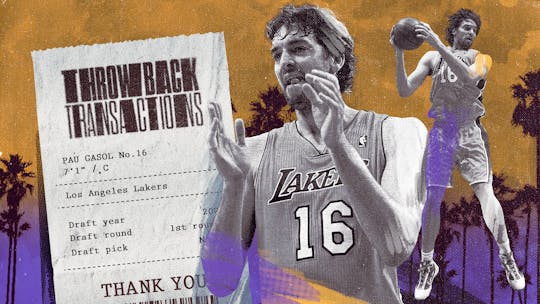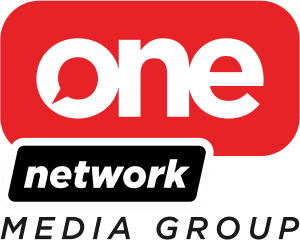The setup
In 2006 and 2007, the Los Angeles Lakers made the playoffs as the 7th seed but they were bounced both times in the first round by the Phoenix Suns.
In the 2007 offseason, a frustrated Kobe Bryant publicly demanded a trade, and teams like the Chicago Bulls, Phoenix Suns, and San Antonio Spurs were possible trade participants. A heart-to-heart conversation with Phil Jackson convinced him to walk his comments back.
A healthy Andrew Bynum was emerging as an inside presence, averaging a double-double – something the Lakers hadn’t had since Shaquille O’Neal moved to Miami. Add to that the return of Derek Fisher and a trade for Trevor Ariza, the team was looking like one of the best in the West.
The day January 13, 2008 was a turning point in the season because, in a game against the Memphis Grizzlies, Bynum dislocated his kneecap and would miss the remainder of the season. The injury left the Lakers incredibly thin in the paint, and the team looked like they were destined to repeat the results of the previous two seasons. They went 3-5 immediately after the injury, ending the month of January at 28-16. The Lakers had to look for frontcourt help quickly or watch the season end in another disappointment.
On the other end of the deal was Pau Gasol, who was selected third overall in the 2001 draft and quickly became Memphis' best player. From 2004 to 2006, the Grizzlies won at least 45 games every year and qualified for the postseason. Unfortunately, they were swept out of the playoffs in the first round every time, failing to win a single playoff game in 12 tries.
In 2006, the Grizzlies finished with the worst record in the league at 22-60. The following season started off very similar as they ended at 13-33. The team realized they needed to make a change. They didn’t feel they were in a position to contend so they decided to shed Gasol even with three years remaining on his contract.
The move
By the end of January, it was no surprise that the Lakers were looking for a game-changing big man to fill the giant hole left by the injured Bynum. The Grizzlies’ newly hired general manager and vice president of basketball operations Chris Wallace, on the other hand, was shopping Gasol, whom they felt had taken the team as far as it would go.
Memphis was looking for a package of young prospects, draft picks, and an expiring contract. The Lakers had a big expiring contract in the $9.1 million owed to Kwame Brown and young prospects in Javaris Crittenton and Pau’s younger brother Marc Gasol, who was still playing in Spain. They also had the 2008 and 2010 picks to give away. On February 1, 2008, then Lakers general manager Mitch Kupchak pulled the trigger on one of the most impactful trades in NBA history.
The Lakers acquired the older Gasol and a 2010 second-round pick without giving up any of the team’s top players. Pau left the cellar to play alongside one of the game’s best players and coaches.
Memphis received Kwame Brown as a salary dump, Javaris Crittenton, and local favorite Jordan Farmar – who was considered to be the best asset moving to Memphis. The younger Gasol, already a member of the Spanish National Team, was in the middle of an MVP season playing for Akasvayu Girona of the Spanish League when the deal was completed. The 2008 draft pick ended up turning into Darrell Arthur and the 2010 pick was used on Greivis Vasquez.
When the deal was finalized, it sent shockwaves throughout the league. Many coaches and league executives questioned why the Grizzlies sent an All-Star to a team they might face in a first-round series in a few years. Fans and media members were up in arms wondering how the Grizzlies gave away an All-Star talent without getting a surefire star in return.
San Antonio Spurs head coach Gregg Popovich famously said at the time, "There should be a trade committee that can scratch all trades that make no sense. I just wish I had been on a trade committee that oversees NBA trades. I'd like to elect myself to that committee. I would have voted no to the LA trade."
The Grizzlies instantly became league villains simply because of where they sent Gasol. There wouldn’t be half the complaints if the All-Star was sent anywhere else. The Lakers, a team already with arguably the best player in Bryant and the best coach in Jackson, were gifted a player with the ability to score, pass, rebound, and block shots at a high level.
Gasol’s skill set fit perfectly in Phil Jackson's triangle offense but he wasn’t perfect though. As with most European players at that time he too came with the reputation of being a highly skilled, but soft, player who plays no defense and wasn’t a leader.
The aftermath
The first thing Kobe said to Pau was, “Let’s win a championship.” Gasol went to work instantly, making his impact felt on both ends of the floor, and in the process, became the Robin to Bryant’s Batman. The opponent always had to respect his versatility, defending him as a passer and extraordinary low-post scorer. Teams sent waves of defenders his way, and with him just being there, it changed things for Bryant and the rest of the team.
The Lakers went 29-9 after the trade and finished the regular season as the top seed in the Western Conference. Kobe would go on to win his first and only regular season MVP award. LA lost only three games in the first three rounds, beating the Denver Nuggets, Utah Jazz, and San Antonio Spurs to reach the NBA Finals. Waiting for the Lakers were the Boston Celtics and their Big 3 of Paul Pierce, Kevin Garnett, and Ray Allen.
In a very physical series that the Lakers lost in six games, Gasol’s soft label would reappear as he seemed to crumble under the championship pressure. In Game 6, Gasol had more turnovers (5) than field goals (4).
The next season saw the Lakers as the title favorites in the West with the return of Bynum. They started the season on fire, tying the record for the best start in franchise history. Bynum learned how to play alongside Gasol evidenced by his career-high 42 points and 15 rebounds in a win over the Clippers. Unfortunately, 10 days later, Bynum tore the MCL in his right knee. Gasol moved to center, Lamar Odom started at power forward, and the Lakers just kept rolling. The Lakers barged into the playoffs with the best record in the West.
The Lakers beat the Jazz in five games, took down the Houston Rockets in seven games in the next round, and eliminated the Nuggets in six games in the Conference Finals. The Lakers met a young Dwight Howard who led the Orlando Magic team to their second Finals appearance in franchise history. Pau Gasol and the Lakers found redemption from the previous season, winning in six games to finally net Kobe his fourth ring and Gasol’s first.
The following season, the team dealt with numerous injuries to key players namely Gasol and Bynum, who both missed 17 games, while Bryant missed nine. Despite the injuries, the Lakers finished the regular season as the No. 1 seed in the West.
LA faced off against the Oklahoma City Thunder’s young trio of future MVPs, Kevin Durant, Russell Westbrook, and James Harden. The Lakers won the tough series in six games. Utah was the next team up and was chopped down in four games. In the Conference Finals, the Phoenix Suns and two-time MVP Steve Nash were the opponents, and it took the Lakers six games to move on to the Finals and set up a rematch with longtime rivals Boston Celtics.
The Lakers were completely healthy this time and had the confidence from winning the previous season’s championship. This also wasn’t the same Pau from 2008 and the entire league knew it. The Lakers went back-to-back, winning the Finals in a grueling seven-game series. Gasol proved to be a pivotal piece averaging 18.6 points, 11.6 rebounds, and 3.7 assists in the series.
While the trade at the time had the entire league puzzled at the perceived inequality of the deal, as the years went by, the trade looked like a win-win for both sides.
Memphis got some cap space after trading the older Gasol. They used that to sign Tony Allen and trade for Zach Randolph, two players who personified the Grit and Grind era. Marc Gasol shined in Memphis and became a three-time All-Star. He also became a defensive anchor throughout his career, even winning Defensive Player of the Year in 2013.
For the Lakers, it was a pair of titles and the ability to keep Bryant in purple and gold for his entire career. Without this trade, Bryant might not be considered one of the game’s greatest players. Winning those two titles with Gasol by his side, he proved he could win without Shaq.
As for Gasol, the future Hall of Famer’s tenure with the Lakers came to an end in 2014, but his legacy speaks for itself. In addition to those three Finals appearances and two championships, he was selected to three All-Star teams (2009-11), one All-NBA Second Team (2011), and two All-NBA Third Teams (2009-10). In seven seasons with the Lakers, Gasol had per-game totals of 17.7 points, 9.9 rebounds, and 3.5 assists on 52.2 percent shooting. On the defensive end, he added 1.4 blocks and 0.6 steals per game.
Gasol solidified his place among the greats of the game during his time in LA. I’m looking forward to seeing jersey No. 16 hanging in the Lakers rafters alongside the other Laker legends and his long-time partner, Kobe.




